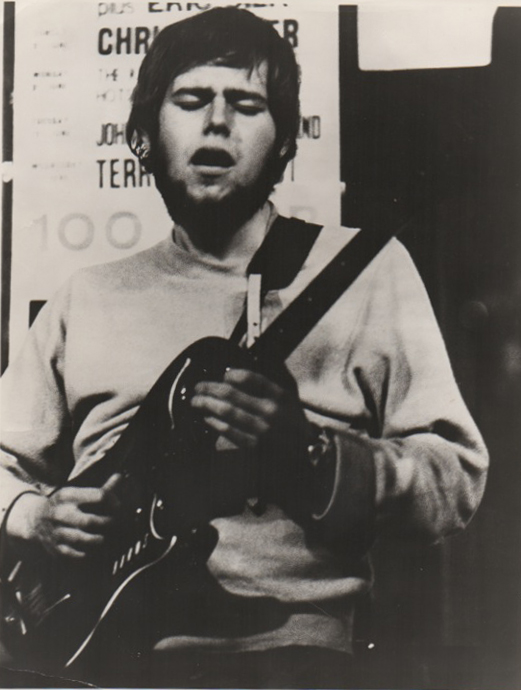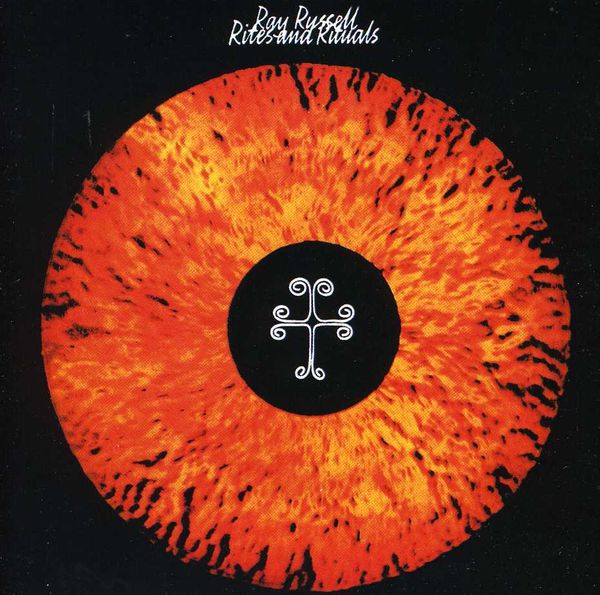Boasting a career of more than 45 years of creative endeavour, Ray Russell's innovative and distinctly unique style of jazz fusion guitar work has inspired countless musicians and has produced a back-catalogue of work still appreciated today by jazz, rock, and folk, lovers around the world. I caught up with this living-legend to delve into his influences, playing, output, collaborations, and more. Interview conducted by Daniel Sharman.
Dan: You mesh the influences of jazz and rock so
seamlessly and have a tremendously distinct style of playing, who influences
you and how do you allow these to culminate in your own playing?
Ray: The first three bands I was in professionally
(John Barry 7, Georgie Fame and the Blue flames, Graham Bond organization) were
all made up of great musicians that
played R&B and Jazz. The other common denominator is guitar! It's very hard
not to influenced by modern music as the guitar is the main instrument in
nearly everything.
Dan: Furthermore, were you directly influenced by
any specific free, abstract jazz (or rock, etc.) musicians?
Ray: The
first influence that comes to mind is John Coltrane. I wanted to recreate the
sound and harmonic structures. I didn't see guitar as a softer sounding
instrument. My take on J.C. Was that the guitar version would be a fiery full
sound. Miles Davis, Jimmy Hendrix, Archie Shepp, lots of influences but apart
from the harmonic knowledge is the Sonic signature. Gil Evans would say that
“Everyone has their cry” . This means that people know it's you playing. Make
things your own.
Dan: A
large part of your discography was released as part of a 8 record deal you had
with CBS, how did this come about and what caused them to sign you for 8 whole
LPs?
Ray: I
owe this to a forward thinking A&R man – David Howells. Unlike these days,
the record companies would give the A&R guys a free hand.
David
was really into starting the CBS realm label. This was his way of representing
the new wave of British Jazz musicians. He did a great job In promoting the
music, he was a true fan. Those albums have been re released and are still
selling so the shelf life is still valid now.
Rock
Workshop was a result of my R&B/rock influences. Again David heard a radio
show we did for the BBC. It was a ten piece band that started with the late
Alex Harvey as the vocalist. The solos could be very wild and break free of the
rock format. This was a unique part of the bands identity.
Dan: You
first stepped into the world of recording with your fantastic début album,
'Turn Circle', released in 1968. The album touched on cool modal jazz, and was
much more restrained when compared to what was happening in the wider guitar
scene at the time - Musicians like Jimi Hendrix trying to be anything but
restrained. What motivated this album and can you describe the process of its
creation?
Ray: Circle was a mix of styles. I was asked to play Footprints as it was a well
known 'Jazz standard'. Some of the more 'cool' tunes were things we would play
on BBC Jazz club. The programme felt more comfortable with a cooler approach.
The album was a mix of both the older styles and a glimpse of things to come
even though I might not have been aware of where it would go. It was music in
flux.
Dan: The
period of the seventies was a very creative time for you. 1971 saw one of your,
in my opinion, best collaborations, which was with Bill Fay on his 'Time of
Last Persecution'' LP. Can you tell us a bit about what your working with Bill
on album was like, and how it came to happen?
Ray: That album has become legendary. You never think that thirty years later,
people still love the way that album sounds. Bill encouraged us to play outside
the circle and extend his songs. We recorded it over a weekend at Decca studios
in North London. All live. I have just finished a new album with Bill for the
Dead Oceans label. He writes great songs from the heart.
Dan: Furthermore, as you moved into the early seventies, your inclination on albums
such as Dragon Hill, Rites and Rituals, and so on, became more angled towards
crazy, free jazz. Can you tell what started this trend towards the abstract and
how do you feel about your playing of this period?
Ray: How
do I feel? It was a time of great learning. Playing that kind of music
marginalised me with some of the Jazz community whereas the rock guys used to
love it. I am proud of the albums produced then. Live at the ICA was a good
album. RCA records reproduced a similar situation to CBS when Olav Wyper the
head of A&R, made the ICA record and also an album by a more 'commercial'
band we had at that time called 'Running man'.
Dan: Your playing repertoire of the time didn't just focus on free jazz, your 1972
band/album 'The Running Man' incorporated rock quite firmly into the mix. What
inspired this album and did it allow you to express your rock influences in a
way you hadn't had a chance to before that point?
Ray: The
first sessions we did at Trident took a while to get the songs into the
simulator feeling we had at rehearsals. We got there when we started to record
All the fallen teen angels with Medicine Head. It was an interesting mix. We
experimented with tracking a lot, going for a sound with lots of presence. I
wasn't sure about some the outcomes originally but in retrospect, there was
some good tracks. That record started with us being the Running men with a few
arrows in our backs but by the end of a mix that was extremely loud, the wounds
had healed.
Dan: Did
you ever feel like you were ever going against the established mainstream jazz
archetype over the course of your own releases? How do you feel about the state
of modern jazz and free music?
Ray: An
open approach to music would never cause a problem to the established or
traditional way of things but living in the dark makes you question the light.
Dan: Speaking technologically for a moment, you've not always been the most
conventional in your choice of music gear - for example, you are seen touting a
Burns model guitar on front of your début 'Turn Circle' - How has your instrumental
gear changed throughout your career?
Ray: A Burns Trisonic which was my first solid
body guitar. We went through a lot of great times together. Just guitar and amp
at that time. I use a strat now. I have a great Bogner amp and some delay
pedals for extra soundscaping. I have a few guitars but I seem to gravitate to
the Fender as it just love the way it sounds even when it's unplugged you can
tell by the wood it's going to be an empowering creative tool.
Dan: One
last question that I've been dying to ask... On your 'Turn Circle' album, where
does the 'A Day in the Life of a Slave of Lower Egypt' saga originate from?
Ray: I
was reading about the pyramids and just thought that the music would depict
some kind of ancient scene. It was a little tongue in cheek and the music was
written first. Finding titles can be fun!
Do You Even Psychedelic? would like to issue a huge thank you to Ray for taking the time to complete this interview, and I would also like to wish him all the best on his and Bill Fay's new album.
Make sure to check out any of Ray's fantastic bands. These include: Nucleus, The Ray Russell Quartet, The Running Man, Ray's collaboration with Bill Fay, and his various other albums and works (especially those released as part of the CBS series).
Full discography of Ray's records with him as the main artist here, and make sure to look out for his and Bill Fay's new album.






No comments:
Post a Comment